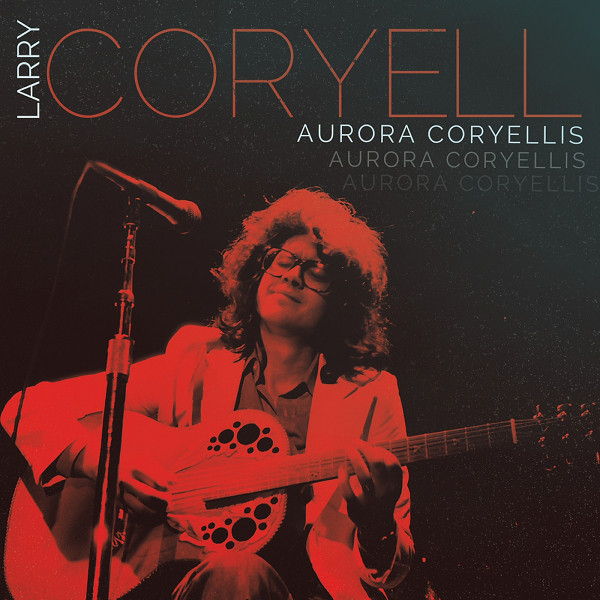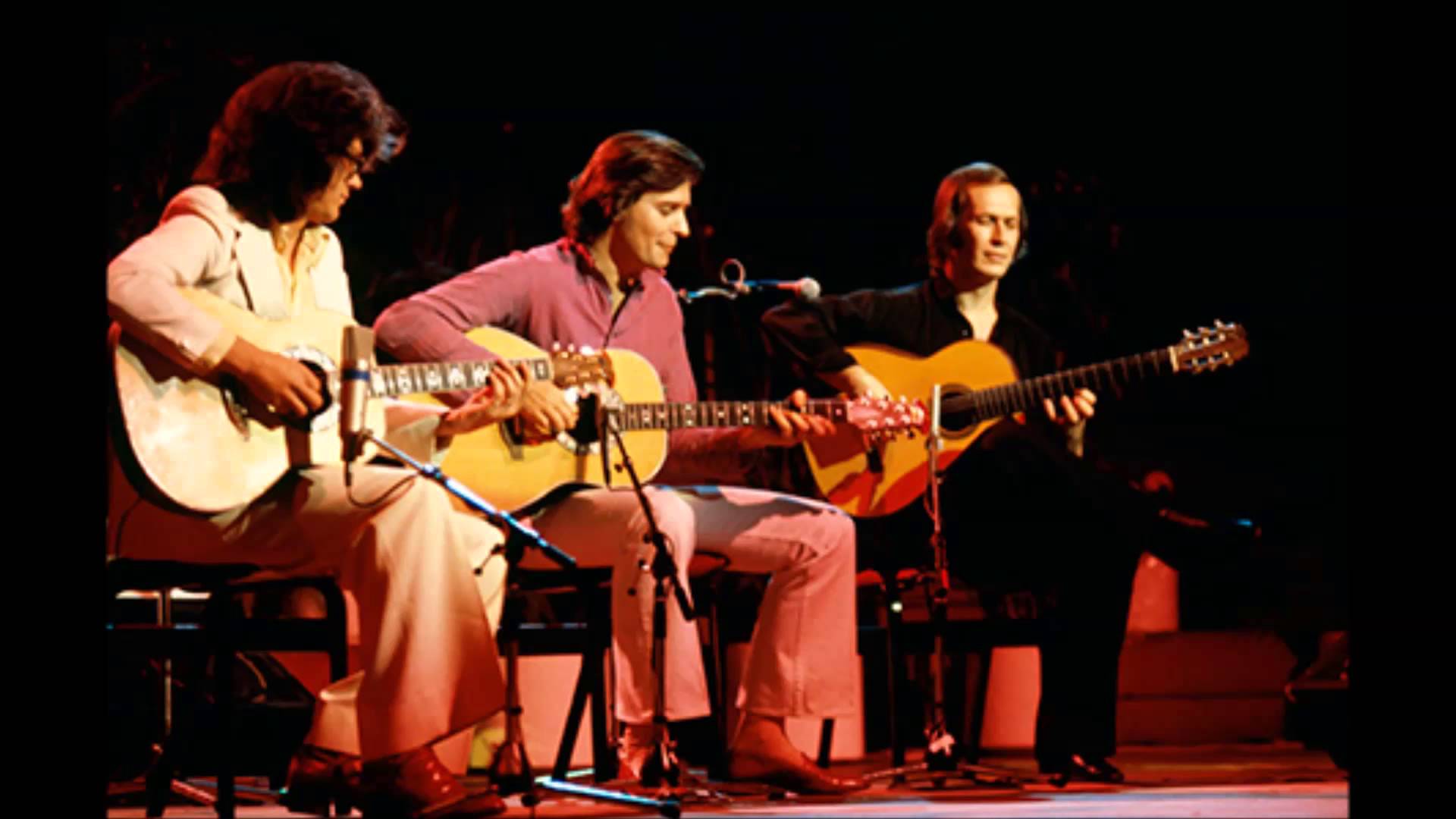Guitar Giant Larry Coryell Last Sounding.
Written by John Diliberto on February 20, 2017
 I just got the news that guitarist Larry Coryell has passed at the age of 73. Coryell’s light has faded in this millennium, but in the 1960s, 70s and 80s, he was a shooting star; a jazz pryrotechnician who was at home with Jim Hall-style cerebral cool, John Coltrane free-form explorations and Hendrixian forays into the electric storm.
I just got the news that guitarist Larry Coryell has passed at the age of 73. Coryell’s light has faded in this millennium, but in the 1960s, 70s and 80s, he was a shooting star; a jazz pryrotechnician who was at home with Jim Hall-style cerebral cool, John Coltrane free-form explorations and Hendrixian forays into the electric storm.
Born in Galveston, Texas on April 2, 1943, Coryell came up playing with musicians like drummer Chico Hamilton and vibraphonist Gary Burton. But I first heard him on Herbie Mann’s Memphis Underground in 1969. I bought it for the flute but my mind was jig-sawed by the frenetic interplay of Coryell with the late-Sonny Sharrock.
It’s amazing that Coryell ever survived his solo debut, Lady Coryell. with his torture-rack vocals and faux psychedelic guitar. But he got it together by his 1971 album, Barefoot Boy where he was exploring free jazz momentum. “Call to A Higher Consciousness” was a direct homage to John Coltrane’s “A Love Supreme.” No doubt the presence of Coltrane drummer Roy Haynes and ‘Trane acolyte, saxophonist Steve Marcus helped that sound.
Coryell had a fractured approach to melody. Instead of John McLaughlin’s unerring momentum, a Coryell solo might skew sideways, split in half and recombine like a Picasso in motion. He formed one of the first fusion bands, The Free Spirits in 1967, which included the late saxophonist, Jim Pepper and drummer Bob Moses (not to be confused with the electro-pop act of the same name). They released one album, Out of Sight and Sound, before Coryell left to play with Burton.
John McLaughlin would turn up throughout Coryell’s career. He played on Coryell’s 1970 album, Spaces, a classic at the time that foreshadowed The Mahavishnu Orchestra with a band that featured drummer Billy Cobham, bassist Miroslav Vitous and keyboardist Chick Corea, all fusion giants in the making.
Offering, from 1972, was the first Coryell album I bought and that band was the first time I saw him live, playing on College Green at the University of Pennsylvania in a benefit for WXPN. The sound-system was a nightmare, but Coryell blew through it.
 Coryell made his strongest statement with The Eleventh House, his fusion band that included trumpeter Randy Brecker, Mike Mandel on Fender Rhodes and synthesizers, Danny Trifan on bass and Alphonse Mouzon on drums. Mouzon was a major influence in the 70s. I saw this band a lot and every time, Mouzon’s cymbals would get higher, until he had to leap off the drum stool to reach them. The albums this band released never did justice to what they could do live. The albums were manicured. The concerts were stratospheric free falls. Just check out the concert video below.
Coryell made his strongest statement with The Eleventh House, his fusion band that included trumpeter Randy Brecker, Mike Mandel on Fender Rhodes and synthesizers, Danny Trifan on bass and Alphonse Mouzon on drums. Mouzon was a major influence in the 70s. I saw this band a lot and every time, Mouzon’s cymbals would get higher, until he had to leap off the drum stool to reach them. The albums this band released never did justice to what they could do live. The albums were manicured. The concerts were stratospheric free falls. Just check out the concert video below.
Speaking of stratospheric, the Eleventh House was also one of the most “high” bands I’ve ever seen. At one concert at Grendel’s Lair in Philadelphia, the band stumbled out of the dressing room, eyes red and unfocussed, completely wrecked. Then they played one of the most dynamic sets I ever saw them perform. They were just on the edge of attaining the renown of contemporaries like Return to Forever, Herbie Hancock and The Mahavishnu Orchestra, but never quite got there.
After the Eleventh House disbanded, Coryell started focussing on acoustic guitar. He released some wonderful solo albums, and wove extended improvisations live. In 1979, Coryell formed The Guitar Trio with McLaughlin and flamenco guitarist Paco de Lucia. I don’t believe they released anything but a concert video. Coryell’s problems with drug addiction found him replaced by Al Di Meola from Return to Forever, who enjoyed the great acclaim this trio garnered.
I lost track of him after that when he moved into more traditional jazz settings, playing duets with love interest, the late guitarist Emily Remler. Unfortunately, they both shared a fondness for hard drugs. Remler died from a heart attack brought on by a heroin hit while on tour in 1990. The last time I saw Coryell was around a few years ago in a guitar duet performance at the Arden Theater in Arden, PA.
He continued to record and tour until near the end of his life. He’d performed his last two shows on Friday and Saturday, February 17 and 18, at Iridium in New York City. He died on Sunday, February 19 in his sleep at his hotel reportedly from natural causes. He is survived by his wife, Tracey, his daughters Annie and Allegra, his sons Murali and Julian, who are both musicians, and six grandchildren.
Larry Coryell, has answered the call to a higher consciousness and is jamming in the Eleventh House Club as we speak.
https://www.youtube.com/watch?v=APV2S_cX2_U

John, Emily Remler died of a heart attack in 1990, she was 32. She did no use heroin. I know Coryell took massive doses of LSD in his early years but eventually became an alcoholic. He’s been sober for many years. Coryell wrote an autobiography that details most of this. It is worth reading. I have amazing memories of the 11th house at The Main Point. His playing was inconsistent sometimes but when he was on it was something.
You are right about the date of her death, but the heart attack was brought on by a heroin overdose. Thanks for the clarification, which I inserted into the piece.
She definitely overdosed… Larry told me that directly when I was jamming with him once…
John– I saw Coryell at the performance on college green at Penn. Spring of ’73 I think the year of the first Spring Fling organized by Peter Byerly (’72). I went on later that year to co-found with Larry Abrahms and others the New Foxhole Cafe, the outstanding jazz venue in the basement of St. Mary’s Church. I do not think Coryell was ever booked there but Hank Mobley, Sun Ra and Philly Joe Jones did.
I saw so many shows at the Foxhole it would be hard to list them all, David Murray, Art Ensemble of Chicago (26 hours late from snowstorm), Paul Bley, Sun Ra a few times, Pharoah Sanders, Revolutionary Ensemble, Byard Lancaster, Anthony Braxton, Norman Connors with Cecil McBee, Odean Pope, Deey Redman, Charles Lloyd, . . . .
I was fortunate to see Larry at the village vanguard in NYC a few times. Plus many of his albums. He was a true musical genius.